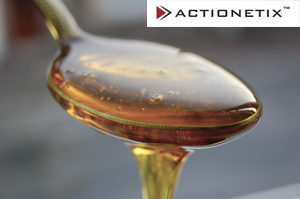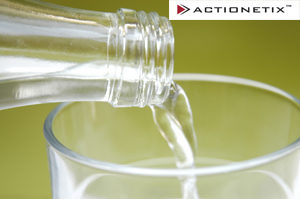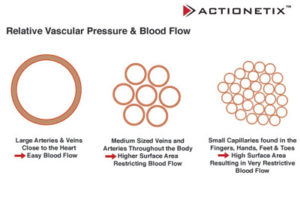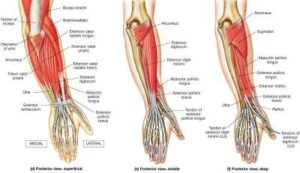This article appeared in the November 2011 issues of MXP Magazine. The majority of the content is pulled directly from the ARM PUMP Elimination System eBook that is available here at ACTIONETIX.com. Arm pump has plagued MX, Mountain Bike, Jet-Ski and thousands of other athletes that depend on their grip for success, so first let’s find out why it happens so you can then understand how we can fix the problem.
Say Goodbye to Arm Pump – Part 1 of 2
We’ll it’s closing in on the end of the Canadian season, and that means getting ready to prep the bike for the winter. Some of us are lucky enough to have an indoor track close by so we can hammer a few laps under refuge from the snow. Knowing that old man winter is going to rear his ugly head in a strange kind of way brings a smile to my face. Racers from coast to coast will finally get a chance to heal the nagging injuries from going bar to bar all season long, and to prepare mentally and physically for the 2012 season. After listening to what people were complaining about this past season, I concluded that next to the ‘Rooster’ call every 6:30 am at Walton arm pump was the biggest performance issue they faced.
I spoke to racers of all ages, shapes and forms to listen time and time again of how arm pump kept them off the podium (hey, I’ve even used that excuse before!). I easily concluded that arm pump was a real issue in Action Sports and in particular motocross, so for the past year, I’ve been researching the condition and developing strategies to reduce or even eliminate it altogether. One of the athletes I work with is CMRC Pro Liam O’Farrell, whose wife Pam actually commissioned a study on arm pump that consisted of over 100 questions and had over 1000 respondents! The information in this study was incredibly valuable… and in some cases shocking.
Study participants from around the world submitted their ‘bath tub’ concoctions and remedies to get rid of arm pump, and it actually was quite comical to read some of them. Here’s a list of my favorites. “Filling the bars with silicone”, “Eating TUMS before I ride”, “Every witch doctor trick you’ve ever heard of…”, “Bananas and Coke… it works!”, “I tried squeezing a rubber ball 50 times really fast to get all the blood flowing and to loosen up the arms. It helps!”, “I had Arm pump surgery to help reduce my arm pump, it helped a lot but did not cure it 100%.”, Fasst anti-vibration inserts”, Putting arm in cold water before riding…(did not work)”, “Exercising at the gym and drinking chocolate milk.”, “Looser jerseys.”, “Tape, Icy-Hot, Stretches, Massage”, “Re-valve suspension.”
Even with some crazy answers above, this had to be my favorite. “Riding everyday, more rest days, no weight training, Aspirin, heat rubs, massages, Endura drink, practicing on a flat sandy track that allowed me to keep going beyond stopping point, sitting down as much as possible while riding, extended periods of not riding at all, warm up laps, not warming up, I tried everything I could think of for a good 5 year period. Every single time I ride it gets me with in 2 laps. The surgery I had wasn’t extensive enough and I gave up.” Well… this clearly shows just how bad arm pump can be an how desperate people are to relieve this brutal condition.
Arm Pump 101 – How it Happens
To understand why arm pump happens, you have to look at some basic principles of physics. These principles are at the very core of why this condition occurs. Let’s take a look at three elementary concepts in the world of physics and how they can affect arm pump; 1) Viscosity 2) Pressure and 3) Force Vectors.
1) Viscosity
According to Dictionary.com, Viscosity is defined as, “The property of a fluid that resists the force tending to cause the fluid to flow.” In layman’s terms, we understand viscosity as how easily a liquid flows, or how thin or thick it is. If you pick up a motor oil, it has a viscosity rating that looks something like 10w30, or SAE 40 for example. Each of these oils has a specific viscosity (thickness) to suit to purpose it is designed for.
Thick, High Viscosity Liquid Thin, Low Viscosity Liquid
Molasses Water


This is no different than your blood. Blood has a viscosity that can be dramatically affected by things like diet, physical conditioning and in many cases with medications called blood thinners. If your blood is highly viscous or thick, it will have a harder time getting through your vascular system. It’s like trying to suck molasses through a straw… it takes a lot of effort. The opposite of this is a liquid like water which has a low viscosity and flows freely through a straw. You can simply suck on the straw and the water comes rushing through. By manipulating diet, training and supplementation, you can dramatically alter the viscosity of your blood so that it flows more freely through your veins, arteries and capillaries, reducing the likelihood of getting trapped in your hands and forearms which ultimately causes arm pump.
2) Pressure
Dictionary.com describes pressure as, “The exertion of force upon a surface by an object, fluid,  etc., in contact with it…” As you set out to hit the track, trails, or water, your heart rate raises which in turn pushes more blood through your vascular system. Your heart is attempting to push more blood and deliver more oxygen to your working muscles. Unfortunately, your body is designed in such a way that your blood vessels are smaller the further they are from your heart. Therefore when you consider what makes up the hands and fingers for example – your veins and arteries turn into thousands of tiny capillaries.
etc., in contact with it…” As you set out to hit the track, trails, or water, your heart rate raises which in turn pushes more blood through your vascular system. Your heart is attempting to push more blood and deliver more oxygen to your working muscles. Unfortunately, your body is designed in such a way that your blood vessels are smaller the further they are from your heart. Therefore when you consider what makes up the hands and fingers for example – your veins and arteries turn into thousands of tiny capillaries.
Due to the nature and size of the capillaries, there is an increase in resistance to your blood. This is a result of the increased surface area of the capillary walls. The result of this “flaw” in your design is that this becomes a resistance point where pressure increases and blood backs up into your forearms creating more pressure and, you guessed it… arm pump!
3) Force Vectors 
When applied to muscle, the most efficient way to contract them it is in a straight line. All of the forces are focused in one direction. If the muscle fibers in your forearm are grouped in straight lines… they contract very efficiently with maximum force. As blood enters your forearm and pumps up the muscles, your muscle fibers tend to bend which decreases your ability to contract. If too much blood gets trapped in your forearms you can even lose your ability to contract and your grip. If this pump occurs repeatedly over a long period of time, you could agitate the fascia (a thin, strong fibrous layer that keeps muscles in place) resulting in a very painful long-term condition. Our goal is to keep blood flowing through your forearm, wrist, hand and fingers so that it will dramatically improve this condition – resulting in a much more comfortable performance-based situation.
Anatomy of the Forearm

The way the forearm and hands are “put together” creates some real challenges for athletes who depend on them to grip for an extended period of time. Most of the muscles that control the fingers in the hand are located in the forearm. Both flexion (grip) and extension (opening your hand) require the activation of the forearm muscles.
This draws a lot of blood to the area. As the blood tries to circulate down through the wrist into the hands and eventually the fingers, this area simply gets more and more restricted by the physical size of the vessels. The blood then begins its journey back to the heart and lungs to get rid of things like carbon dioxide in exchange for critical nutrients like oxygen. Since there is a lot of resistance in the hand and fingers this action creates a dam-like effect, backing up the blood in your forearms and ultimately compromising the ability to contract your muscles.
Armed with the knowledge of how physics plays a role in arm pump, you can now understand why it occurs. The next challenge is knowing how to change your body’s physiology so that the condition can be managed or even eliminated.
